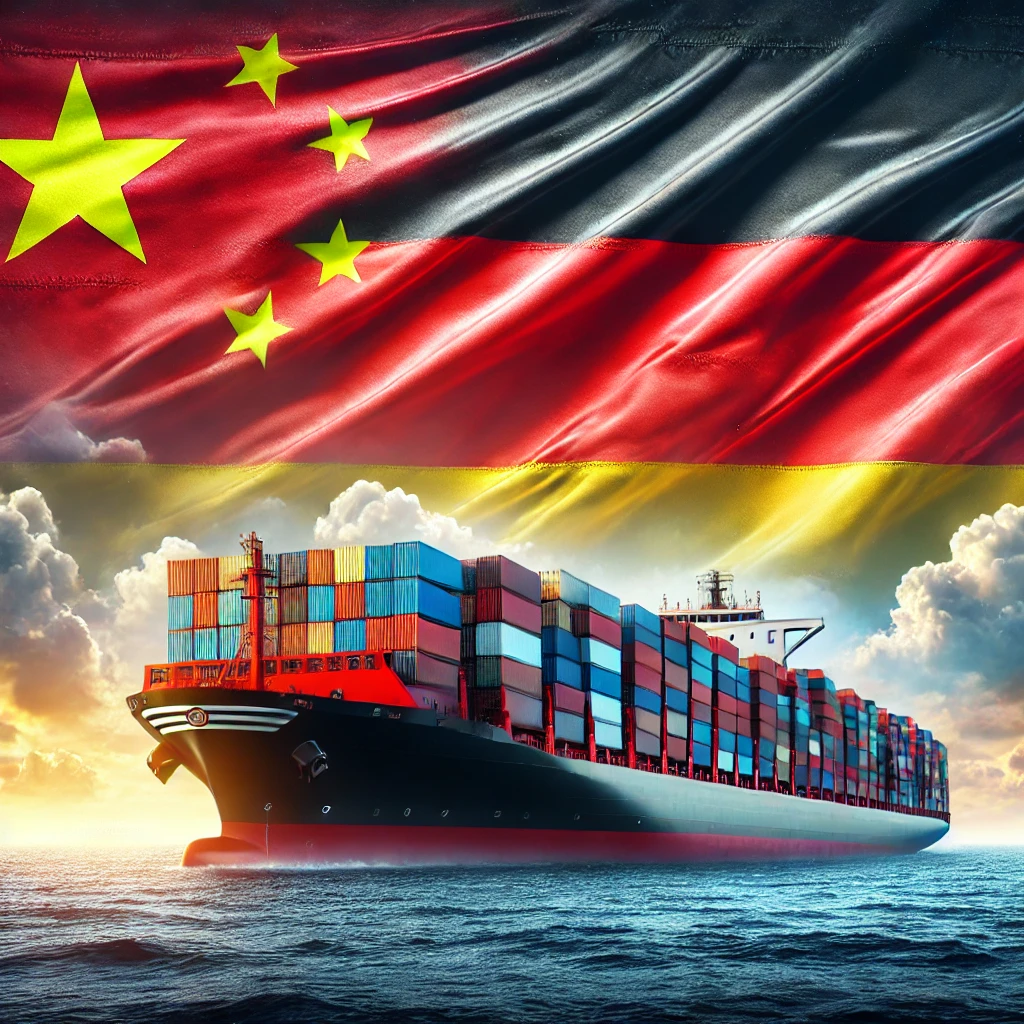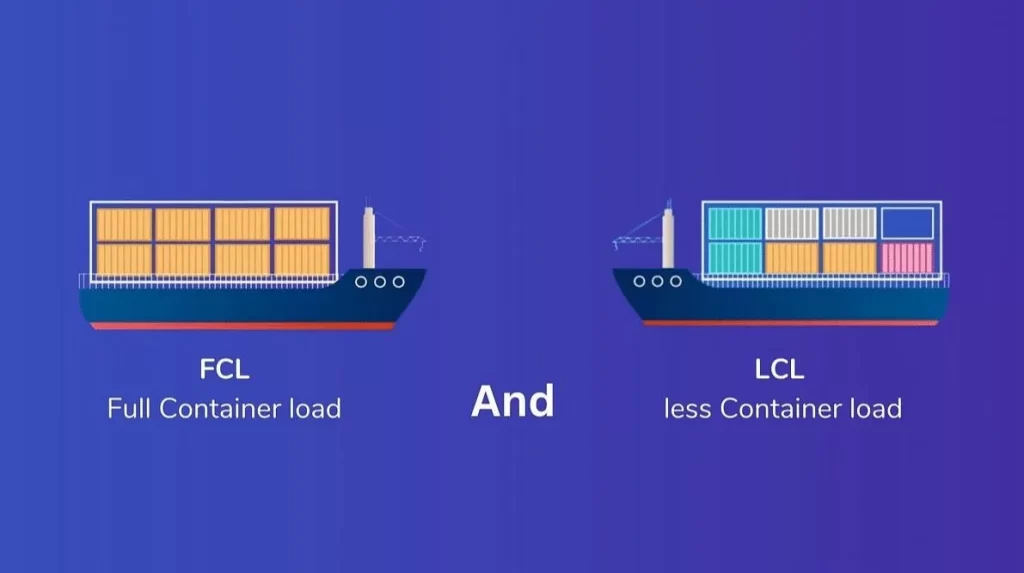- By TOP CHINA FREIGHT
- September 17, 2025
- Shipping
Table of Contents
Moving freight from China to Germany is a critical part of international trade, as Germany serves as one of Europe’s largest import markets. Businesses often face challenges such as high shipping costs, customs regulations, and selecting the right transportation mode. This guide explains the key options, compares methods, and offers strategies to make freight shipping from China to Germany more efficient and cost-effective.

What Are the Main Shipping Methods from China to Germany?
There are three primary shipping methods: sea freight, air freight, and rail freight. Each method differs in cost, speed, and cargo capacity.
| Shipping Method | Average Transit Time | Cost Level | Best For |
|---|---|---|---|
| Sea Freight | 30–40 days | Lowest | Bulk, large volumes |
| Air Freight | 5–8 days | Highest | Urgent, high-value goods |
| Rail Freight | 18–22 days | Moderate | Balance of cost & time |
Sea freight is most economical for containers, while air freight is best for urgent cargo. Rail freight, through the China–Europe rail network, provides a good balance.
How Much Does Freight from China to Germany Cost?

Freight costs depend on container size, weight, route, and transport mode. Additional charges include customs clearance, insurance, and port handling.
| Cargo Type | Estimated Cost | Notes |
|---|---|---|
| 20ft Container (FCL) | $2,000 – $3,200 | Best for small-medium shipments |
| 40ft Container (FCL) | $3,500 – $5,500 | Cost-effective for larger volumes |
| LCL (per CBM) | $100 – $180 | Ideal for smaller loads |
| Air Freight (per kg) | $5 – $8 | Prices fluctuate by route and season |
| Rail Freight (per CBM) | $180 – $250 | Balanced cost vs. speed |
Costs are subject to seasonal fluctuations. Peak shipping seasons before Chinese New Year and Christmas often see higher rates.
What Is the Transit Time for Shipments to Germany?
Transit times vary by mode of transportation:
| Origin Port in China | Destination in Germany | Sea Freight (Days) | Rail Freight (Days) | Air Freight (Days) |
|---|---|---|---|---|
| Shanghai | Hamburg | 30–35 | 18–20 | 5–6 |
| Shenzhen | Bremerhaven | 32–38 | 20–22 | 6–7 |
| Ningbo | Hamburg | 30–34 | 19–21 | 5–6 |
While sea freight is the slowest, it is highly cost-effective. Rail and air are preferred for shorter lead times.
What Documents Are Required for Freight from China to Germany?

Ensuring compliance with customs is essential. Importers must prepare all documents accurately to avoid delays.
| Required Document | Purpose |
|---|---|
| Bill of Lading / Air Waybill | Proof of shipment and transport contract |
| Commercial Invoice | Declares value and transaction details |
| Packing List | Itemized list of cargo |
| Certificate of Origin | Verifies where goods were produced |
| Importer’s EORI Number | Required for EU customs clearance |
Should You Choose FCL or LCL for Sea Freight?

For sea shipments, businesses must decide between Full Container Load (FCL) and Less than Container Load (LCL).
| Factor | FCL | LCL |
|---|---|---|
| Cost | Cheaper per unit | Higher per unit |
| Security | Higher, sealed container | Moderate, shared cargo |
| Speed | Direct, fewer delays | Possible consolidation delays |
| Best For | Large shipments | Small to medium shipments |
Therefore, if your shipment volume is high, FCL provides better cost efficiency. However, LCL is practical for smaller loads.
How Does Rail Freight Improve Efficiency?

Rail freight between China and Germany has grown due to the Belt and Road Initiative. It offers a faster alternative to sea freight while costing less than air freight.
Advantages of rail freight:
- Reliable schedules
- Reduced carbon emissions compared to air
- Better balance of speed and cost
Challenges:
- Limited capacity during peak seasons
- Possible delays at border crossings
For many businesses, rail freight is now a preferred option for supply chain optimization.
What Are the Customs Duties and Taxes in Germany?
Germany applies EU import regulations, meaning duties and VAT must be paid.
Customs Duties:
Based on HS codes (typically 0–12%).
VAT:
Standard rate is 19%, reduced rate is 7% for some products.
Other Fees:
Anti-dumping duties may apply on certain Chinese goods.
To avoid penalties, ensure your HS codes are accurate and always work with a licensed customs broker.
Case Study: Electronics Shipping from Shenzhen to Hamburg

A German importer ordered 10 pallets of electronic accessories from Shenzhen. The shipment was 12 CBM, weighing 3 tons.
- Option 1: Air Freight – Cost: $20,000, Transit: 6 days
- Option 2: Sea LCL Freight – Cost: $2,400, Transit: 35 days
- Option 3: Rail Freight – Cost: $3,600, Transit: 20 days
The importer chose rail freight because it offered a balance of time and cost. Delivery was completed in 21 days, reducing warehouse stockouts without overspending.
How to Minimize Shipping Delays from China to Germany?
Peak seasons cause space shortages.
Customs delays are common.
Professional partners manage logistics efficiently.
Real-time visibility reduces risks.
Pros and Cons of Each Shipping Mode
| Mode | Pros | Cons |
|---|---|---|
| Sea Freight | Lowest cost, large capacity | Longest transit time |
| Air Freight | Fastest delivery, reliable | Very expensive |
| Rail Freight | Balanced cost and speed | Capacity limits, border delays |
Choosing the right method depends on your supply chain priorities—cost, speed, or capacity.
Conclusion
Freight from China to Germany involves careful planning, cost management, and compliance with customs requirements. Sea freight remains the most economical option for bulk goods, while air freight provides unmatched speed. Rail freight offers a valuable middle ground, balancing efficiency and cost. By preparing documents accurately, choosing the right mode, and working with experienced logistics providers, businesses can streamline their supply chain and reduce risks when shipping to Germany.
Need a Shipping Quote?
If you want expert guidance and peace of mind, our team is ready to assist.
TJ China Freight offers tailored solutions to help businesses of all sizes ship more reliably from China.

FAQ
Q1:What is the cheapest way to ship from China to Germany?
Sea freight is usually the most economical choice for bulk cargo, while rail freight offers a good balance of cost and speed.
Q2:Do I need customs documents for Germany?
Yes. Common documents include the bill of lading, packing list, commercial invoice, and customs declaration forms. Some goods also require certificates.
Q3:Can I ship small parcels from China to Germany?
Yes. Express courier services are ideal for small parcels under 100kg, offering door-to-door delivery in about 3–5 days.
Q4:Is rail freight reliable from China to Germany?
Yes. Germany is a key hub of the China–Europe Railway Express, with frequent trains and stable schedules.
Q5:How much does freight from China to Germany cost?
Costs vary by mode: sea is cheapest, rail is mid-range, and air is most expensive. Prices depend on weight, volume, and shipping season.
